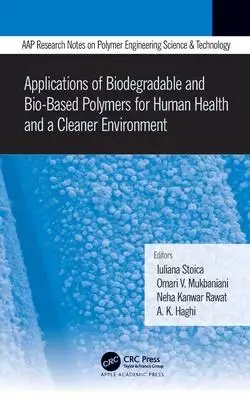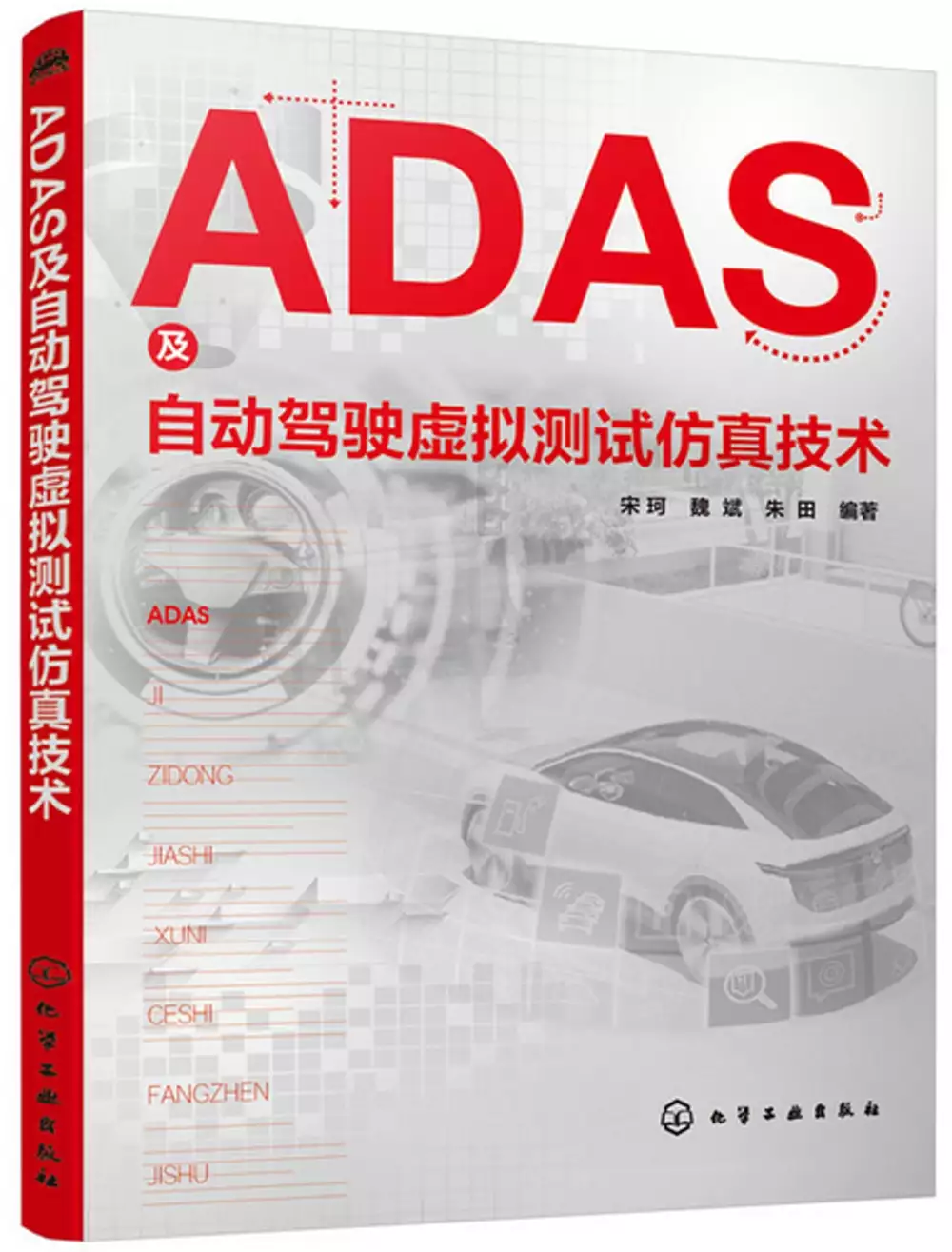Advanced technologie的問題,透過圖書和論文來找解法和答案更準確安心。 我們找到下列包括價格和評價等資訊懶人包
Advanced technologie的問題,我們搜遍了碩博士論文和台灣出版的書籍,推薦寫的 Applications of Biodegradable and Bio-Based Polymers for Human Health and a Cleaner Environment 和宋珂的 ADAS及自動駕駛虛擬測試模擬技術都 可以從中找到所需的評價。
這兩本書分別來自 和化學工業所出版 。
國立臺北商業大學 企業管理系(所) 陳玫真所指導 陳家賢的 以享樂性及功能性因素探討智能家電之使用意圖 (2021),提出Advanced technologie關鍵因素是什麼,來自於智能家電、行為意圖、享樂性、功能性。
而第二篇論文國立臺灣師範大學 英語學系 陳浩然所指導 柯思勤的 以語料庫為本的研究—探討 Coursera 大規模開放式線上課程的字彙涵蓋量 (2021),提出因為有 詞彙覆蓋率、大規模開放式線上課程、學術口語單字、學術英語的重點而找出了 Advanced technologie的解答。
Applications of Biodegradable and Bio-Based Polymers for Human Health and a Cleaner Environment

為了解決Advanced technologie 的問題,作者 這樣論述:
Iuliana Stoica, PhD, is a Scientific Researcher in physics at the Romanian Academy, "Petru Poni" Institute of Macromolecular Chemistry, Department of Polymer Materials Physics. She received her PhD from the Department of Polymer Physics and Structure of the Romanian Academy at the same institute. Sh
e joined a postdoctoral fellowship program at Politehnica University of Bucharest, Faculty of Applied Chemistry and Materials Science, Department of Bioresources and Polymer Science. Her area of scientific activity is focused on characterization of a wide range of polymers, copolymers, polymeric com
posites, and polymeric mixtures. She was a main or co-author for over 95 papers in peer-reviewed ISI journals, and she has contributed several book chapters on polymer and materials science. She was member of the organizing and program committees of several scientific conferences. She was also revie
wer for a number of prestigious journals in the field of polymer science Omari Mukbaniani, DSc, is full Professor of Ivane Javakhishvili Tbilisi State University (TSU), Faculty of Exact and Natural Sciences, Department of Chemistry; Chair of Macromolecular Chemistry, Tbilisi, Georgia. He is also Dir
ector of the Institute of Macromolecular Chemistry and Polymeric Materials at TSU, and a member of the Academy of Natural Sciences of Georgia. For several years he was a member of the advisory board of the journals Proceedings of Iv. Javakhishvili Tbilisi State University (Chemical Series), Contribu
ting Editor of the journal Polymer News and the Polymers Research Journal, and Chemistry and Chemical Technology. His research interests include polymer chemistry, polymeric materials, and chemistry of organosilicon compounds. He is the author more than 480 publications, 25 books, monographs, and 10
inventions. He created the International Symposium on International Symposium on Polymers and Advanced Materials ICSP&AM, which takes place every other two years in Georgia. In 2018 he was a Chair of 26th World Annual Forum on Advanced Materials PolyChar 26. Neha Kanwar Rawat, PhD, is a recipient o
f prestigious DST Young Scientist Postdoctoral Fellowship and is presently a researcher in the Materials Science Division, CSIR-National Aerospace Laboratories, Bangalore, India. She received her PhD in chemistry from Jamia Millia Islamia (A Central University), India. Her main interests include nan
otechnology-nanostructured materials synthesis and characterization, with her main focus on comprising green chemistry, novel sustainable chemical processing of nano-conducting polymers/nanocomposites, conducting films, ceramics, silicones, matrices: epoxies, alkyds, polyurethanes, etc. She also pur
sues her interest in fusing new technology in areas that include electrochemistry, organic-inorganic hybrid nanocomposites, and protective surface coatings for corrosion inhibition and MW shielding materials. She has published numerous peer-reviewed research articles in journals of high repute. Her
contributions have led to many chapters in international books published with the Royal Society of Chemistry, Wiley, Elsevier, Apple Academic Press, Nova U.S., and many others in progress. She is a member of many groups, including the Royal Society of Chemistry and the American Chemical Society (USA
) and a life member of the Asian Polymer Association. A. K. Haghi, PhD, is the author and editor of 165 books, as well as over 1000 published papers in various journals and conference proceedings. Dr. Haghi has received several grants, consulted for a number of major corporations, and is a frequent
speaker to national and international audiences. Since 1983, he served as professor at several universities. He is former Editor-in-Chief of the International Journal of Chemoinformatics and Chemical Engineering and Polymers Research Journal and is on the editorial boards of many international journ
als. He is also a member of the Canadian Research and Development Center of Sciences and Cultures (CRDCSC), Montreal, Quebec, Canada. He holds a BSc in urban and environmental engineering from the University of North Carolina (USA), an MSc in mechanical engineering from North Carolina A&T State Univ
ersity (USA), a DEA in applied mechanics, acoustics and materials from the Universite de Technologie de Compiègne (France), and a PhD in engineering sciences from Universite de Franche-Comte (France).
以享樂性及功能性因素探討智能家電之使用意圖
為了解決Advanced technologie 的問題,作者陳家賢 這樣論述:
近年,隨著智慧行動裝置普及、無線網路與通訊技術快速發展,加上物聯網與節能概念興起,均是發展智能家電的推手,由於智能家電帶來便利操控與省能潛力,也將帶動市場快速成長。本研究探討在智能家電之功能性因素和享樂性因素對行為意圖的影響。 本研究對象為使用過智能家電的經驗之用戶,總共回收568份有效問卷,並且進行回歸分析來分析及驗證各變數之間的關係。研究結果歸納出兩項研究發現:(1) 智能家電之功能性因素的「安裝容易」、「耐用性」、「安全性」對於「行為意圖」有顯著影響。(2) 智能家電之享樂性因素「技術新奇」、「娛樂性」、「感官訴求」對於「行為意圖」有顯著影響最後,根據研究結果對學術以及實務界
提出相關建議。
ADAS及自動駕駛虛擬測試模擬技術

為了解決Advanced technologie 的問題,作者宋珂 這樣論述:
本書提出了一個基於Matlab-OpenModelica-Unity(MOMU)的多軟體聯合虛擬模擬平臺,平臺可用於ADAS和自動駕駛汽車的測試及驗證。本書以通俗易懂的語言、形象的圖示展示了平臺的架構和各個軟體的簡單功能以及使用方法,並基於精心設計的開發實例,闡述了模擬平臺在不同應用場景下的具體結構以及每個部分的建模原理,將基本概念融入到平臺搭建過程中,加深讀者的印象,提升讀者的感性認識和認知水準。 本書適合具有一定ADAS控制建模、車輛動力學建模和機器學習程式設計基礎的讀者閱讀,也可作為高等院校本科生、研究生學習ADAS和自動駕駛虛擬測試模擬技術的教程,還可作為汽車測試工程師學習參考的資料
。 宋珂,同濟大學汽車學院,碩導,副教授,同濟大學汽車學院車輛工程專業博士,德國卡爾斯魯厄理工學院聯合培養博士。主要研究領域包括:燃料電池汽車動力系統建模及模擬方法,燃料電池汽車動力系統匹配設計流程及方法,燃料電池汽車動力系統整車能量管理控制策略,電/電混合電動汽車動力系統混合度優化設計理論及方法,基於AUTOSAR、ISO26262標準的電動汽車動力系統控制技術。近三年發表燃料電池汽車相關學術論文20餘篇,SCI/EI檢索5篇,申請發明專利7項(已獲權4項),實用新型專利1項,軟體著作權登記5項。 第1章 ADAS/AD 測試與驗證技術
1 1.1 ADAS 研究現狀 1 1.1.1 ADAS 概述 1 1.1.2 ADAS 技術研究與應用現狀 2 1.2 自動駕駛研究現狀
4 1.2.1 發展自動駕駛汽車的必要性 4 1.2.2 國外自動駕駛汽車研究現狀 6 1.2.3 國內自動駕駛汽車研究現狀 7 1.3 ADAS 和自動駕駛模擬測試技術
7 第2章 虛擬測試平臺MOMU 架構 11 2.1 現有虛擬測試平臺 11 2.1.1 基於PreScan 的AEB 縱向碰撞演算法模擬平臺 12 2.1.2 基於Eclipse 的車輪自我調整巡航控制模擬平臺 13 2.1.3 基於NIPXI 的車道偏離警告模擬平臺
13 2.1.4 現有模擬測試平臺的優缺點分析 14 2.2 Matlab-OpenModelica-Unity (MOMU)虛擬測試平臺 15 2.3 適用於ADAS 的MOMU 平臺資料流程 18 2.4 適用於自動駕駛的MOMU 平臺資料流程 19
第3章 基於OpenModelica 的車輛動力學模型 20 3.1 車輛動力學建模方法研究現狀 20 3.2 Modelica 在車輛動力學建模中的應用 21 3.3 多領域統一模組化語言Modelica 22 3.3.1 Modelica 建模的基本步驟
22 3.3.2 基於Modelica 語言的建模 24 3.3.3 標準模型庫和模擬工具 27 3.4 電動汽車動力系統的建模機制 29 3.5 電動汽車動力模組建模
30 3.5.1 車用電動機分類及特點 31 3.5.2 電動機的工作原理及建模 32 3.6 電動汽車傳動模組建模 35 3.6.1 機械元件庫及機械介面 35
3.6.2 動力傳動建模 35 3.6.3 動力學建模 36 3.6.4 車身建模 38 3.6.5 制動系統建模 39 3
.6.6 懸架建模 40 3.6.7 輪胎建模 40 3.6.8 電動汽車整車模型 41 3.7 電動汽車模擬與計算 42 3.7.1
電機模型模擬 42 3.7.2 輪胎模型模擬 43 3.7.3 速度階躍輸入模擬 44 3.7.4 典型工況模擬 46 第4章 基於Unity
的模擬環境搭建 50 4.1 Unity 軟體介紹及安裝 50 4.1.1 Unity 背景簡介 50 4.1.2 Unity 下載安裝 51 4.2 Unity 入門
52 4.2.1 開始面板 52 4.2.2 關鍵功能 53 4.2.3 遊戲物體控制腳本編寫 54 4.3 Roll-a-Ball 遊戲創建示例
56 4.3.1 設置遊戲 56 4.3.2 物體移動控制 59 4.3.3 視角跟隨設置 62 4.3.4 添加可收集物體
62 4.3.5 新建UI 顯示計數 65 4.3.6 生成遊戲 67 ……………. 隨著人工智慧的加速發展和汽車雷達等感測器的快速完善,高級輔助駕駛系統(Advanced Driving Assistant System,ADAS)功能越來越強大,自動駕駛(Aut
onomous Driving,AD)汽車量產的日子也越來越近。很多傳統車企都在投入大量的人力物力,從自動駕駛Level1逐步完善ADAS功能,最終實現自動駕駛Level5。部分互聯網公司甚至直接進行Level5的自動駕駛研究。毫無疑問,未來自動駕駛汽車將大幅減少道路交通事故,緩解交通擁堵,並使地球成為更加綠色的生活場所。但是在更高級的自動駕駛汽車大規模量產推廣之前,其可靠性必須要得到驗證。雖然實車實路的驗證是最具有說服力的方式,但是其測試週期長、成本昂貴限制了自動駕駛汽車的研發進度。所以穀歌、特斯拉、豐田等大型公司都建立了自己的虛擬測試平臺,加速訓練和驗證自己的自動駕駛汽車,節省路試和研發的
時間。 本書以通俗易懂的語言、形象的圖解展示了一個基於Matlab-Open Modelica-Unity(MOMU)的多軟體聯合虛擬模擬平臺。本書基於組成虛擬模擬平臺的各軟體功能,詳細介紹了模擬平臺各部分的搭建過程,以及相應的建模原理,將基本概念融入平臺搭建過程,並精心設計了開發實例,加深讀者的印象,提升讀者的感性認識和認知水準。 本書共分為8章。第1章介紹了ADAS和自動駕駛技術發展背景及現狀,重點分析相關測試與驗證技術,提出研發虛擬測試平臺的必要性。第2章提出了一種先進的多軟體聯合虛擬測試平臺——MOMU,介紹了平臺的主要組成、各部分的功能以及平臺的優點。第3章以建立一個電動汽車車輛
動力學模型為主線,介紹了Open Modelica車輛動力學模型的關鍵模組和建模流程,並解釋了相關的理論基礎,方便讀者加深對模型的理解。第4章介紹了Unity的背景和關鍵場景建模技術,並以一個遊戲的建模案例使讀者熟悉Unity建模方法。第5章詳細介紹了搭建一個自動緊急制動系統控制策略的全過程,為之後的聯合模擬提供了必要的基礎。第6章以自動緊急制動系統為例介紹了ADAS模擬平臺的搭建,主要包含平臺間的資訊交流實現和結果展示。第7章介紹了Unity用於機器學習的官方外掛程式ML-Agents,主要包含外掛程式的安裝以及Python運行環境的安裝,附加的官方實例向讀者直觀地展示了ML-Agents的
操作和相關功能,並驗證了外掛程式以及運行環境的安裝正確性,同時設計了一個簡單的訓練示例,詳細地展示了訓練環境的搭建過程。第8章介紹了自動駕駛虛擬測試模擬實例完成的全過程,並對模擬結果進行了必要的資料提取與分析。 本書由同濟大學宋珂、魏斌和湖南中車時代電動汽車股份有限公司朱田編寫,並設計開發了書中實例。全書由宋珂組織統稿,Unity Technologie公司龔敏彥負責審閱。 在本書編寫過程中得到了Unity公司、Math Works公司和非營利組織Open Source Modelica Consortium的支援。 本書適合具有一定ADAS控制建模、車輛動力學建模和機器學習程式設計基礎
的讀者閱讀。可作為高等院校本科生、研究生學習ADAS和自動駕駛虛擬測試模擬技術的參考教材,也可作為汽車測試工程師學習參考的資料。 本書中所有內容都經過Unity、Open Source Modelica Consortium和Math Works公司相關專家的審閱,且本書實例經過筆者親自測試驗證。由於水準有限,書中難免出現疏漏或者不當之處,誠望讀者批評和指正。 編著者
以語料庫為本的研究—探討 Coursera 大規模開放式線上課程的字彙涵蓋量
為了解決Advanced technologie 的問題,作者柯思勤 這樣論述:
文獻指出以英語做為外語學習者在接觸學術英文聽力(如大規模開放式線上課程)時,常面臨的一項挑戰是單字量不足,除此之外,對於專業單字不熟悉也是影響學術聽力理解的原因之一。因此,本研究旨在透過(a)計算 Coursera大規模開放式線上課程的詞彙覆蓋率與(b)計算學術口語詞彙表對於 Coursera 大規模開放式線上課程的詞彙覆蓋率,探討理解 Coursera 大規模開放式線上課程所需的單字量,以及其學術口語單字檔案。研究結果顯示要達到 95%的詞彙覆蓋率,需要 3,000 個字彙量加上專有名詞、邊際詞彙、複合字以及首字母縮略字;而要達到 98%的詞彙覆蓋率,則需6,000 個字彙加上專有名詞、邊
際詞彙、複合字以及首字母縮略字,然而,不同領域所需的單字量有所不同。至於學術口語詞彙的整體覆蓋率,學術口語詞彙表(Dang, Coxhead, & Webb, 2017)覆蓋了 90.77% 的 Coursera MOOCs 語料庫,然而,ASWL 在各領域的覆蓋率並不相同。上述發現表明,以英語做為外語學習者需要掌握 3,000 到 6,000 個詞彙以及專有名詞、邊際詞彙、複合字和首字母縮略字,才能充分理解 Coursera 大規模開放式線上課程。研究結果還表明,學習學術口語詞彙表有助於學術聽力理解,因為學習者在聽 Coursera 大規模開放式線上課程時很可能會遇到學習學術口語詞彙表中的詞
彙。根據以上的發現,本研究亦提出英語教學上之意義探討。